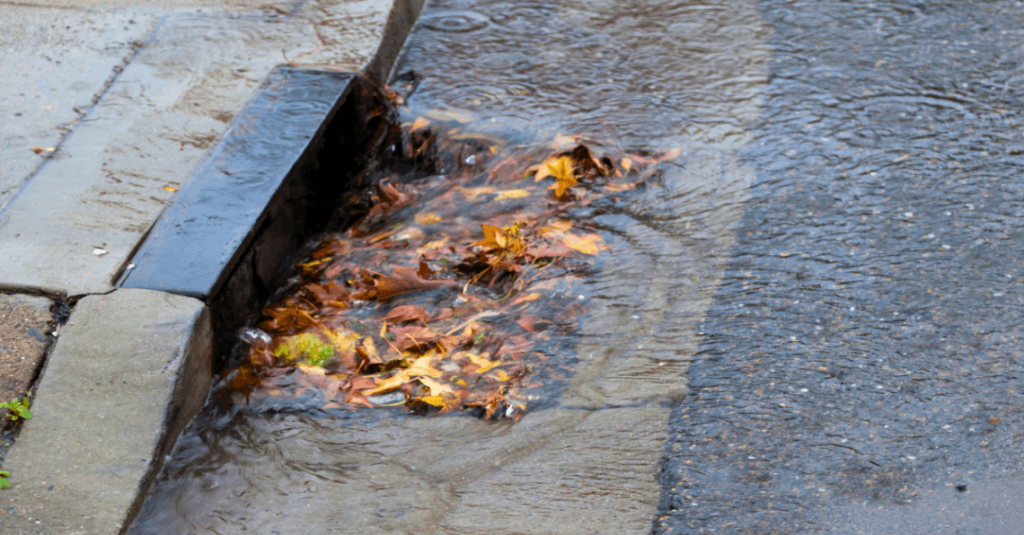Maintaining a clean and efficient storm drainage system is crucial for protecting our environment and preventing expensive repairs. Storm drain cleaning is often overlooked but plays a vital role in preventing flooding, water contamination, and infrastructure damage. As facility managers, partnering with a trusted environmental services provider like ACE Environmental can help you understand the importance of regular storm drain maintenance and access a variety of state-of-the-art and cost effective equipment to keep these systems flowing smoothly.
Why is Storm Drain Cleaning Important?
Storm drains are designed to collect and redirect rainwater, preventing flooding and minimizing erosion. However, over time, these drains can become clogged with debris, leaves, branches, sediment, trash, and even hazardous materials. Here’s what proper maintenance will prevent, protect and preserve:
- Flood Prevention: Clogged storm drains are a primary cause of localized flooding. Accumulated debris obstructs water flow, causing excess rainwater to back up onto streets, parking lots, and even inside buildings. Consequently, with water being unable to drain properly, it can create the perfect breeding ground for mosquitoes and other pests, posing a variety of health risks to the community. Regular cleaning ensures that water can flow freely, reducing the risk of flooding, water damage and unwanted pests.
- Water Quality Protection: Storm drains are directly connected to natural water bodies such as rivers, lakes, streams and oceans. When debris and pollutants accumulate in the drains, they can contaminate the water, harming aquatic life and posing a threat to public health. Routine cleaning helps prevent these contaminants from entering our waterways.
- Infrastructure Preservation: Excessive debris and sediment can erode pipes and culverts, leading to structural damage. If left unchecked, this can result in costly repairs and disruptions to daily operations. By proactively cleaning storm drains, facility managers can extend the lifespan of their drainage infrastructure and avoid expensive repairs.
What Methods Are Used to Clean Storm Drains?
To ensure effective storm drain maintenance, various specialized equipment is used. Some common tools and techniques include:
- Hydro-Jetting and Vacuum Trucks: These trucks utilize high-pressured water jets to dislodge debris while simultaneously introducing a high-powered vacuum system to remove the loosened materials. These mighty tools are highly effective for cleaning all types of storm drains and removing heavy sediment, sludge and debris quickly and efficiently.
- Confined Space Entry (CSE): Operating within the strict guidelines of confined space entry regulations, these crews employ safety measures like proper ventilation, air quality monitoring, and personal protective equipment to safeguard their team. They are skilled in navigating the intricate network of underground storm drain systems, utilizing specialized cleaning equipment to remove blockages and debris in a variety of hard-to-reach areas. Their expertise and attention to detail play a critical role in maintaining the integrity and functionality of storm drainage systems, reducing the risk of flooding, water contamination, and costly repairs.
- CCTV Inspection: Closed-circuit television (CCTV) cameras are deployed to inspect the condition of storm drains and identify any blockages or damage. This technology enables facility managers to assess the system’s health and plan maintenance accordingly.
Are Regular Maintenance Schedules Important?
Creating and adhering to a regular storm drain maintenance schedule is crucial for facility managers. Here’s why:
- Cost Savings: By investing in regular maintenance, facility managers can address minor issues before they escalate into major problems, avoiding costly repairs and downtime.
- Compliance with Regulations: Proper storm drain maintenance is often a legal requirement. Regular cleaning ensures compliance with environmental regulations and helps avoid potential fines or legal complications.
- Environmental Responsibility: As stewards of the environment, facility managers should prioritize storm drain maintenance to prevent pollutants from entering our waterways and protect the surrounding ecosystem.
Partner with a Professional, Like ACE Environmental
Storm drain cleaning may not always be top of mind for facility managers, but it is a critical component of proper infrastructure maintenance. Regular cleaning using specialized equipment can prevent flooding, protect water quality, and preserve drainage infrastructure. By implementing a proactive maintenance schedule, facility managers can save money, comply with regulations, and fulfill their environmental responsibilities. Remember, investing in storm drain cleaning is an investment in a cleaner, safer, and more sustainable future. For more information on storm drain cleaning and other environmental services, visit our website at www.aceenvironmental.net or give us a call (410) 354-8030.

